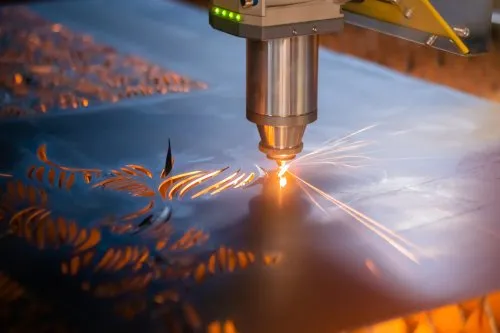A cavity containing a gain medium stimulates the emission of light. Light is accumulated inside the cavity, resulting in a laser beam. Two mirrors, one of which is not perfectly reflective and the other is a partial reflection, enable the beam to be focused in a particular direction. The beam is of special characteristics, resulting in a particular process that will be discussed later. This article will provide an overview of how lasers work and how they can be used for processing different materials.
Fibre lasers
Compared to other types of lasers, fibre lasers are more efficient. They convert around 70 to 80% of their power to useful light, and they are long enough to avoid breaking. Another advantage of fibre lasers is their high beam quality. This is because the light produced by the laser is focused on a very small area. The smaller the dot, the more effective the laser cutting. These benefits have made fibre lasers popular for laser processing applications.
CO2 lasers
CO2 lasers operate in the infrared region of the electromagnetic spectrum. CO2 laser optical components are typically made from specialized materials. A laser pulse stimulates nitrogen molecules, which then gain energy. This excited state can last for long periods without discharging energy. The light emitted by CO2 lasers is infrared, which is invisible to the human eye. Hence, it is used for various types of laser processing.
Pulsed lasers
Pulsed lasers have many advantages over conventional types of lasers, including a very short pulse duration and relatively low cost. The pulse duration depends on the gain medium, cavity length, repetition rate and pump energy. Commonly used in industry, pulsed lasers can produce average powers of hundreds of watts with repetition rates ranging from 10 Hz to 200 kHz. Most industrial processes fall into the kilohertz to tens-of-kilohertz range.
Direct laser writing
Direct Laser Writing (DLW) is a promising technology for depositing intricate patterns on surfaces. Until now, however, Direct Laser Writing has been limited in its materials choice. Now, a new approach has been developed that utilises the unique properties of nanoparticles suspended in a silver-based solution. Ultra-short laser pulses can activate these nanoparticles to produce highly stable patterns with sophisticated nanoscale structures. This new technique could significantly broaden the range of materials available for DLW.
Photoresists
When used in photolithography, photoresists can be used for a variety of applications. The process begins with a positive photoresist, which is liquid before spinning. It can then be modified to suit specific applications. These could include on-chip microsupercapacitors, functional nanocomposites, and microfluidic arrays. Once developed, the photoresist can then be used to form the final product.
Tennant’s law
When it comes to the resolution and throughput of a laser, Tennant’s law holds true. Specifically, the areal throughput of a laser is equal to R2 x pixel count and the time it takes to write a voxel is proportional to the volume of the voxel. When you double the number of pixels, the writing time doubles. However, doubling the volume does not increase the areal throughput. This means that if you want to double the throughput of a laser system, you have to increase the number of pixel columns and voxels.
Applications
One of the key trends in the field of laser processing is the development of equipment intelligence. In the future, intelligent factories will be able to upload data about material processing and production plans to the enterprise cloud. With this, engineers can remotely control the status of equipment. In this way, manufacturing processes will become more automated, informatized, and digital. As a result, applications of laser processing are becoming increasingly common in construction machinery manufacturing. In this article, we will discuss some of the most prominent applications of laser processing.


